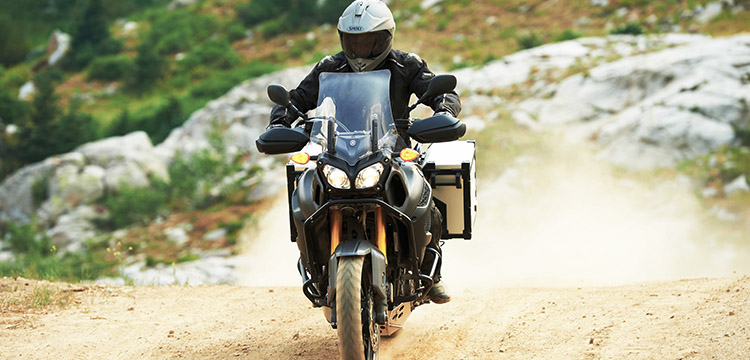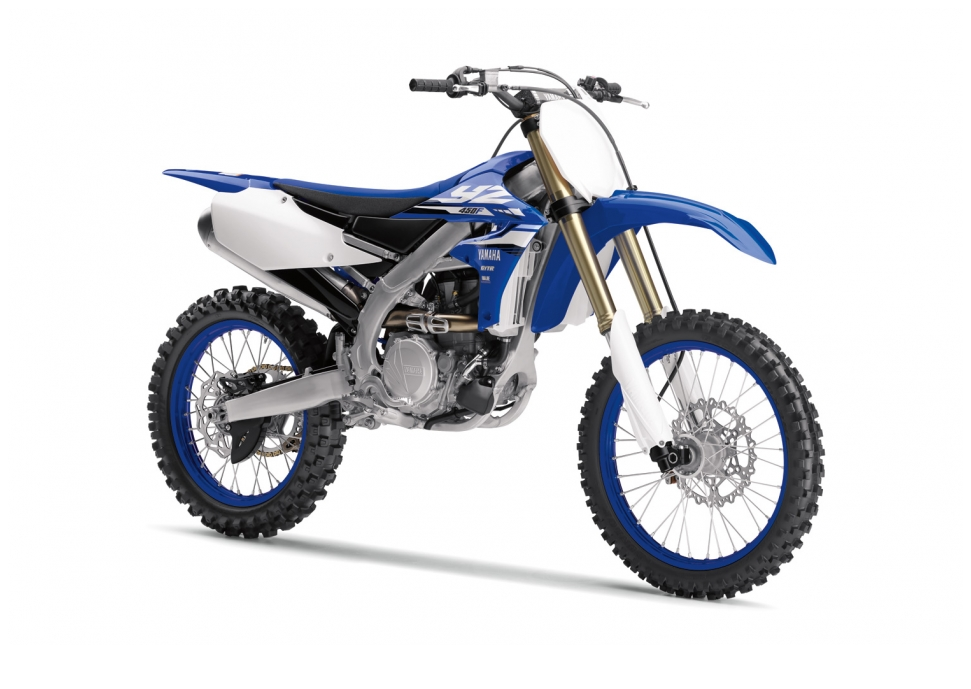
From issue 158, Feb/Mar 2021.
Is one of these non-identical twin motorcycles better than the other?
WORDS & IMAGES: DAMIEN AND NIGEL PATERSON
For decades the parallel twin ruled motorcycling, smoother and more powerful than the singles which came before them and with more character than the four-cylinder multis which came later. Many riders, then and now, believe a motorcycle should have two pots.
The two bikes here — non-identical twins — are great examples of what makes a parallel twin so appealing: lightweight, willing and easy to ride. As LAMS bikes I was thinking they would make a great introduction to motorcycling; having had them in my shed for a couple of weeks I’m also thinking they are great for anyone wanting
a lightweight, economic, versatile and fun motorcycle,
no matter how much experience you’ve got.

TWIN TWINS
The MT-07LA ($11,849 Ride Away) and XSR700 ($12,899) share the same chassis, wheels, engine, electronics… the differences are in the tank, headlight, instruments, handlebars, tyres, seat, lighting and other ancillary components.
Where the MT-07LA is sporty and modern, the XSR is upright and Steampunk-inspired retro, with modern components underlying the style. The extra $1050 will be significant for some, but I think it will make the bike a bit more collectable in the future — however that will only make you wish you’d kept it in 20 years’ time!
Another big difference is that the MT-07 is available in three colour schemes — Ice Fluo (with red wheels), Icon Blue and Tech Black (each with matching wheels).
The XSR has only been offered in one colour scheme
for each year — currently Red/White with gold wheels.

BEYOND THE STYLE
The style differences are obvious, but until you throw a leg over the two you probably wouldn’t realise the seat hight of the MT-07 is 30mm lower at 805mm, the handlebars are wider by about 70mm so the ergonomics do feel a bit different. You’re a bit more upright on the XSR, a bit more locked into the seat on the MT-07.
Maybe you’d pick the MT-07 as being 4kg lighter, but I didn’t. The specifications for the two bikes list a few other differences you’d never pick riding them back to back: the XSR has a 5mm-longer wheelbase (probably due to different tyres) but is 10mm shorter (different tailpiece).

WHERE THEY’RE THE SAME
According to Yamaha, the wheels, brakes, suspension, engine management, ABS, exhaust and chassis are all the same. Any handling or performance differences come from the tyres and wider handlebars — there’s not much else there to change the feel of the two bikes.

PERFORMANCE
Both these machines run the Australia-only 655cc MT-07 engine — the non-LAMS MT-07 High Output version ($12,599 ride away) has a 689cc powerplant, 29cc above the capacity limit for Learner Approved bikes.
So Yamaha reduced the bore of the MT-07 by 2mm and thus the capacity, plus made some changes to the electronics and squeezed the MT-07 and XSR700 under the LAMS power-to-weight limit and bingo, a pair of naked twins that perform like mid-range bikes until they run out of puff both at the higher ends of their rev range and top speeds because of their slightly strangled output.

THE ENGINE
As part of the Yamaha’s Massive Torque range, the engine in these bikes is designed to give its best through its mid-range, with an uneven firing order of 270 degrees (basically the two pots fire close together, then there’s a gap before they fire again, which not only emulates
a V-twin motor, it also helps create better traction
and linear torque delivery.
The engine’s 689cc sibling now also powers the Ténéré 700 Adventure bike, because it’s torquey, lightweight and slim.

THE CHASSIS
The engine is also part of the chassis, being a stressed member. At the front of the bike the frame is steel tubes forming a backbone across the motor to the alloy plates at the swingarm pivot and the Superbike-inspired banana-shaped alloy swingarm.
It’s light, stiff enough for a sub-200kg machine
and certainly the output of the LAMS models is never going to tax the chassis.
SUSPENSION AND RUNNING GEAR
Triple-disc brakes, sportsbike tyre sizes, the light overall package and a chassis set-up aimed at cities and byways rather than freeways makes these bikes perfect for taking on the urban grind.
Australian Road Rider picked up the bikes from Yamaha’s warehouse and promptly dived into the truck-infested, bumpy busy roads of Western Sydney, and these machines were great. Both have an upright riding position — a little more upright on the XSR — which means you’ve got a great view of the traffic around you, the willing mid-range motor squirts along nicely and the lightweight and narrow build makes filtering easy.
The current models now have adjustable damping on the rear single shock as well as numerous spring preload settings. Yamaha revised the fork settings for 2020 so handling is bit sportier, but they didn’t try turning it into a sportsbike.
As supplied, the front on the XSR felt a bit softer than on the MT-07, but there’s not a whole lot of difference between the two bikes. While they don’t pretend to be sportsbikes — Yamaha has the R3 and R6 for those roles — on public roads these bikes work really well.
The suspension, which at first I thought was a bit soft, actually responds well to bumps, absorbing the undulations of Australia’s goat tracks, making the ride confidence-inspiring and hassle-free.
They are set up to use all 130mm of available wheel travel, which means they do dive a little under brakes and wallow if pushed hard, but that’s getting beyond the design brief.
That initial ride to get the bikes back to ARR’s Hunter Valley base was going to be either via a long, boring and heavily tolled motorway, or up through the suburbs and along the escarpment of the Great Dividing Range via Wisemans Ferry — a no-brainer as far as I’m concerned, even if the long way adds over an hour to the trip.
Through the suburbs both bikes were great and as the houses thinned and the speed limits increased, more fun was to be had. Once we’d ridden the ferry to the northern side of the Hawkesbury River, we were on the famous piece of bitumen that the NSW government has allowed to fall into horrible disrepair — it’s bumpy, narrow, potholed and even semi-permanently down to one lane in places.
Years ago this was a road to test sportsbikes; these days it can be frightening on a machine with stiff suspension and clip-on handlebars, but the XSR and MT-07 were great. Within their design brief and for the money, Yamaha’s fitted these bikes with pretty reasonable suspension.
The brakes are easy to use, with plenty of stopping power but not the crazy bite of some sportsbike systems. Set up and squeeze hard and these bikes will pull up quick.
Rolling along at or just above the speed limit left plenty in reserve for overtaking, while being both fast enough for the conditions and slow enough to enjoy the spectacular views you get on this road across the Hawkesbury (but don’t tell your non-riding mates — the road is struggling to cope with the traffic it already gets).

SMOOTHER ROADS
When the road and the river separate you start climbing up a winding hill that seems in better condition than the earlier sections, until some truck-induced damage on your riding line appears. But the wide, flat-ish ’bars on both bikes made countersteering around these threats easy, although it’s the sort of road where too many people ride too hard and get caught out.
We turned right towards Yarramalong, down the famous Bumble Hill, where you can explore the handling of your bike, and this pair of Yamahas impressed.
From Yarramalong the road winds through farming country back to the M1, a freeway which is part of the road that takes you right around the country.
As I expected, freeways aren’t the natural home of the XSR and MT-07. The riding position and lack of weather protection mean you cop the wind at full force, the riding position now working against you. For city freeways, where you’re maybe darting between exits and are only up to speed for 10 or even 20 minutes, no dramas, but droning along for hours at a time would be draining (for that, check out the MT-07 Tracer).
By the end of the ride my companion and I decided there’s little to pick between the two bikes, although the wider ’bars and slightly more padded seat on the XSR had us both leaning toward its key when jumping back on.

ELECTRONICS AND EXTRAS
The technology features of the MT-07 and XSR are basically hidden away or non-existent. Up front both bikes have comprehensive digital instruments, but that’s where the similarity ends. The MT-07’s instruments are housed in a wedged-shaped unit above the handlebars, a monochrome LCD screen above with colour warning lights.
There’s a clock, tripmeters, odometer, fuel gauge, gear indicator and big digital speed readout, while the tach duties are taken care of by a bar graph that runs from left to right as revs rise.
The XSR’s digital instruments are housed in a round dial, no doubt chosen for its retro style. The warning lights are around the outer, with an inner LCD panel providing much the same info as the MT-07’s, just in a different way. I especially liked the way the tacho is displayed,
and LCD graph that climbs around the dial itself.
The ABS system is non-switchable and some owners will ride their bike for years and never engage it. Others might be called upon to do an emergency stop before the first service. Good that it’s there.
The engine management and throttle response systems have no user adjustability — no riding modes, no traction control, cruise control or heated grips.
The MT-07 has some fabric loops under the seat which make it easier to strap something on the back. We used Ventura and Nelson-Rigg seatbags successfully.

ACCESSORIES FOR VERSATILITY AND STYLE
Yamaha and third-party accessory makers have built lots of parts to make the MT-07 or XSR your own. You can get a soft-sided Sport Heritage bag and fork gaiters for the XSR to make it even more retro, rear-wheel stands and an Akrapovic racing exhaust for either bike.
For the XSR there’s a foot pedal adjuster kit that replaces the standard units, allowing you to adjust
the position of the footpegs, brake and gear levers.
The popularity of the MT-07 around the world means there are heaps of options when it comes to luggage, dress-up bits and screens, too.

WHICH TO CHOOSE
These bikes are so close to being the same that your choice should come down to personal preference.
The MT-07LA is a great choice for the LAMS restricted rider who is looking for a full-size bike,
and is good value for the fully licensed rider looking
for a great commuter and fun weekend machine.
It’s not only cheaper than the full-power HO version, it’s also likely to hold its value better because large-capacity LAMS bikes do.
The XSR is for the rider who is looking for that retro style with modern performance.















